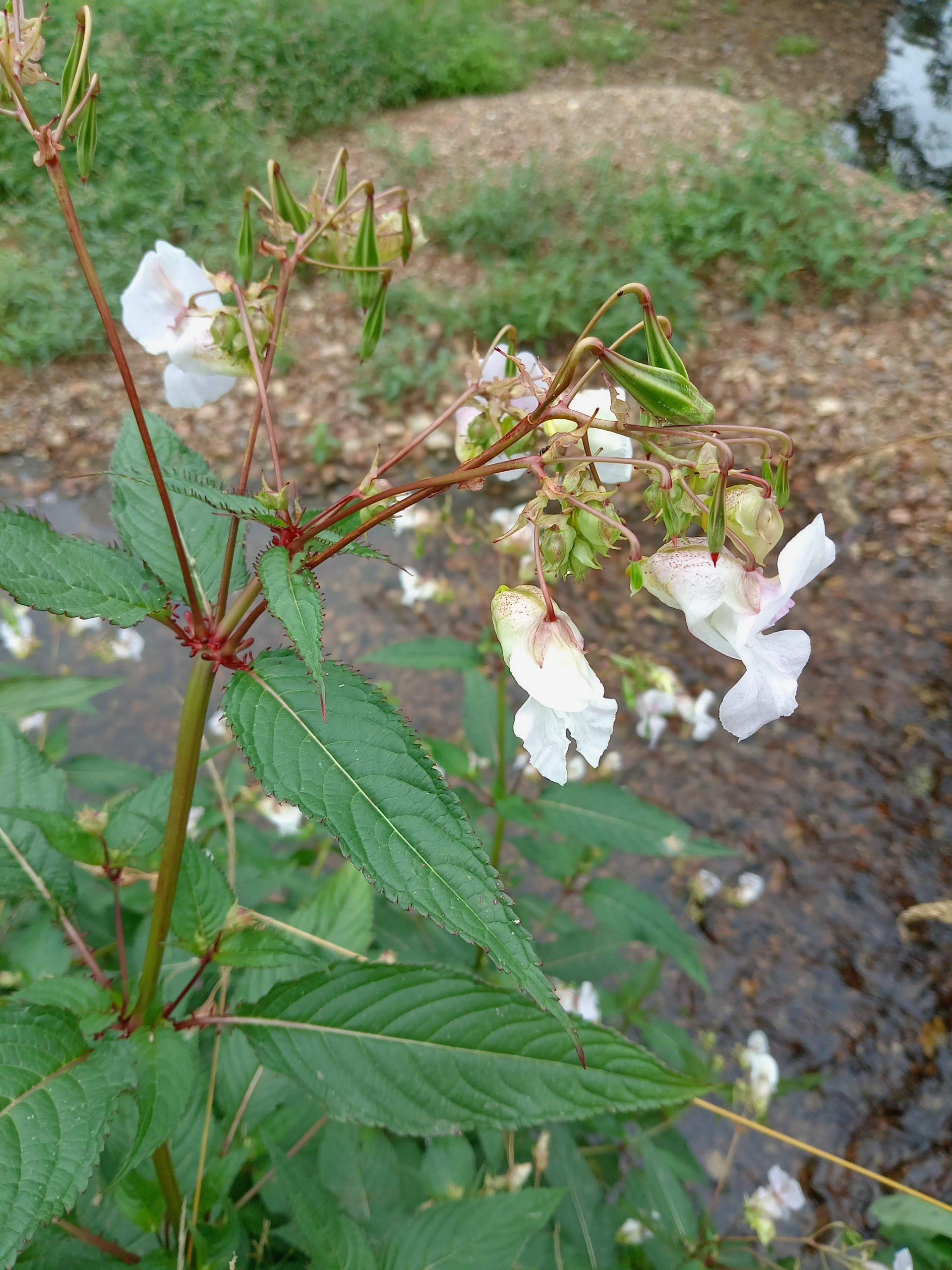
Himalayan Balsam (Impatiens glandulifera) has become a very familiar member of the flora in both the countryside and some urban areas. First introduced in1839 (Wildlife Trusts, 2018) it soon escaped into the wild and spread rapidly, as a consequence it now listed as a non-native invasive weed.
Himalayan Balsam owes it’s success to its ecology which gives it a unique advantage over other flora. It grows rapidly after germinating in early spring and flowers from mid summer to October (NNSS, 2019), reaching more than five foot tall and only requiring a shallow root system. It is not dependent on bright light which makes it easier to establish itself in more shaded areas. Furthermore it shades out already established native flora thus taking over. Reproduction is via seed pods. Collectively there can be as many as 800 seeds per plant which, when ready, pods explode, sending seeds in all directions.
Getting rid of it is not easy, mainly due to safe access as it is usually volunteer groups that go out in what’s called a ‘pulling session’. Due to its very shallow root system it is easy to pull the plants out of the soil – this should be done before seed pods have established. It is an offence under schedule 9 of the 1981 Wildlife and Countryside act to distribute and or allow to grow, Himalayan Balsam.
Why the white flowers?
The interesting focus of this article is the variation of flower colour. During a walk along the river Otter near Ottery St Mary Devon, it was noted that some flowers of Himalayan Balsam had white petals in contrast to the more familiar pink. Further research indicates that abiotic conditions are the likely reason (Kurose, Pollard, Ellison. 2020).
Abiotic conditions simply refers to the environmental conditions such as temperature, light, soil type, nutrient level, water depth and speed of flow etc. When abiotic conditions change sufficiently, the species, functional and phylogenetic diversity of flora is affected. A 2022 study points out that of the 17 elements required for plant growth, 14 of them are found in soil (Shu, Jiang, Liu, Lv. 2022).
It would be interesting to find which element of the abiotic conditions had triggered such a response. Temperature and windspeed are unlikely (and as such are more climatic factors) as there were pink flowers on the same plant and nearby plants. The white variety was also noted growing at Parke, National Trust, Bovey Tracey, along a woodland edge away from the river.
There is a really informative pdf with lots of information including key features of Himalayan Balsam (Impatiens glandulifera), here, with thanks to nonnativespecies.org.
Bibliography:
Non Native Species Secretariat, 2019
D Kurose, K Pollard, C Ellison. 2020
College of Ecology and Environment China, Y Shu, L Yiang, F Liu, G Lv. 2022
Wild Walking Devon | All Rights Reserved.